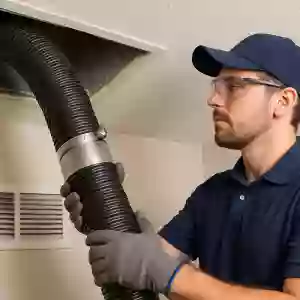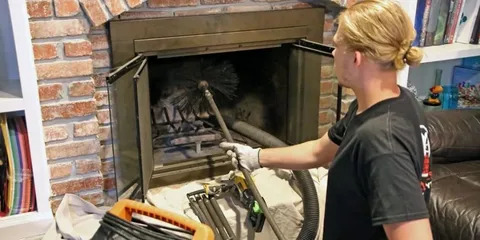Safety is a critical factor when working with heating appliances, especially those involving fire and combustion. Proper inspection, cleaning, servicing, and technical assessment ensure that each repair is handled with precision. By following standardized processes, professional technicians reduce risks, extend the lifespan of the appliance, and ensure efficiency in heating. Every step requires careful attention to structural integrity, fuel-burning mechanisms, and ventilation systems to protect both property and occupants. That is why reliable processes are essential in wood stove repair.
Why It Matters to Follow Safe Processes in Wood Stove Repair Procedures
Safe procedures matter because wood, coal, and pellet stoves function as combustion-based heating systems. Improper servicing or unskilled repairs may result in dangerous carbon monoxide leaks, chimney fires, or damage to the stove’s structure. A certified repairman or technician ensures that cleaning, burner adjustments, and part replacements are done correctly, minimizing hazards. Whether the unit is a Harman woodstove, a pellet burner, or a traditional furnace-style system, proper servicing guarantees that the equipment works efficiently in the area where it operates. Shops offering repair services emphasize safety because even a small error in installation or repairs can compromise the entire system.
What Common Problems Occur That Require Safe Repair Procedures
Several recurring issues highlight the need for safe repair processes. Cracked stove walls or liners may cause burning inefficiencies and smoke leakage. Faulty burners or damaged baffles often result in incomplete combustion, producing excess soot or creosote that requires thorough cleaning. A clogged chimney or flue can block ventilation, raising the risk of fire or harmful gas exposure. In pellet stoves, broken augers and defective igniters are common service calls. Ash buildup is another frequent problem requiring professional cleaning to restore airflow. Repair shops and technicians also see cases where warped doors, damaged seals, or malfunctioning dampers disrupt safe burning practices. Each of these problems demands expert repairs and servicing rather than quick fixes, ensuring the stove works safely and effectively.
What Key Benefits Come From Following Safe Repair Processes
Following safe repair methods offers numerous benefits. It ensures that stoves, burners, and furnaces run at peak efficiency, lowering fuel consumption whether using wood, coal, or pellet systems. Properly repaired stoves distribute heat evenly across the area, making them more effective in colder conditions. Another key advantage is reduced health risks, as correct servicing prevents carbon monoxide leaks and excessive smoke. Safe repairs also extend the overall lifespan of woodstove units, saving owners from premature replacement costs. Professional repair services guarantee compliance with safety regulations, giving peace of mind that the equipment is both functional and secure. Ultimately, safe processes protect both property and people while ensuring reliable performance.
What Cost Breakdown Explains Safe Wood Stove Repair Services
Pricing for wood stove repairs depends on the complexity of the problem, type of stove, and level of servicing required. Below is a general cost breakdown:
| Service Type | Average Cost (USD) | Notes |
|---|---|---|
| Basic Cleaning & Inspection | $100 – $200 | Includes ash removal, flue check, and airflow cleaning |
| Seal and Gasket Replacement | $50 – $150 | Essential for maintaining airtight burning |
| Burner or Baffle Repairs | $150 – $350 | Applies to wood, coal, and pellet stoves |
| Chimney or Vent Repairs | $200 – $500 | Ensures proper ventilation and safety |
| Pellet Stove Auger or Igniter Repair | $200 – $450 | Specialized servicing for pellet systems |
| Full Servicing & Safety Check | $300 – $600 | Includes complete cleaning, repairs, and safety certification |
Disclaimer: Prices vary by area, repair shops, type of stove, and technician service rates. These ranges are estimates for general informational purposes only.
What Key Features Define Safe Repair Processes for Wood Stoves
Safe processes include a series of technical steps performed by certified technicians and repairmen. First, a detailed inspection identifies cracks, pellet stoves leaks, or inefficiencies. Cleaning follows, where professionals remove soot, ash, and creosote using specialized cleaner tools. Burner and baffle servicing ensures optimal fuel burning, whether using wood, coal, or pellet. Seals and gaskets are checked for airtight performance, while ventilation systems are tested to confirm proper airflow. Furnace-like units and Harman stoves may require additional parts servicing due to their design. Shops specializing in repairs emphasize technician expertise and reliable tools. By incorporating these features, woodstove servicing ensures safe, efficient, and long-lasting operation.
“Safe repair procedures are not just technical steps, they are protective measures that keep heating systems reliable and secure.”
FAQS
Q1. How often should a wood stove receive professional servicing?
Most stoves require annual servicing, though heavy usage may need cleaning and inspection twice a year.
Q2. Can I perform stove repairs without a technician?
Minor tasks like ash cleaning may be manageable, but structural repairs and burner servicing should always be done by a qualified repairman.
Q3. What signs indicate my stove needs repairs?
Smoke leakage, difficulty maintaining heat, unusual odors, or visible cracks suggest immediate servicing.
Q4. Are pellet stoves more costly to repair than wood stoves?
Yes, pellet stoves often require specialized parts like augers and igniters, which increase repair costs.
Q5. Do shops near me provide both cleaning and repair services?
Most shops and servicing centers offer complete packages including inspection, repairs, and professional cleaning.
Conclusion
Safe wood stove repair processes depend on structured methods carried out by skilled technicians. From inspection and cleaning to burner adjustments and part replacements, every step plays a role in maintaining efficiency and safety. Common issues such as cracks, soot buildup, or faulty components highlight the need for professional servicing. The benefits include reduced risks, improved efficiency, and extended stove life. With costs varying by area, type of stove, and level of service, investing in professional repairs ensures long-term value. Safe, reliable processes guarantee that stoves, furnaces, and burners continue to provide warmth securely and effectively.
Read More: Our Services




